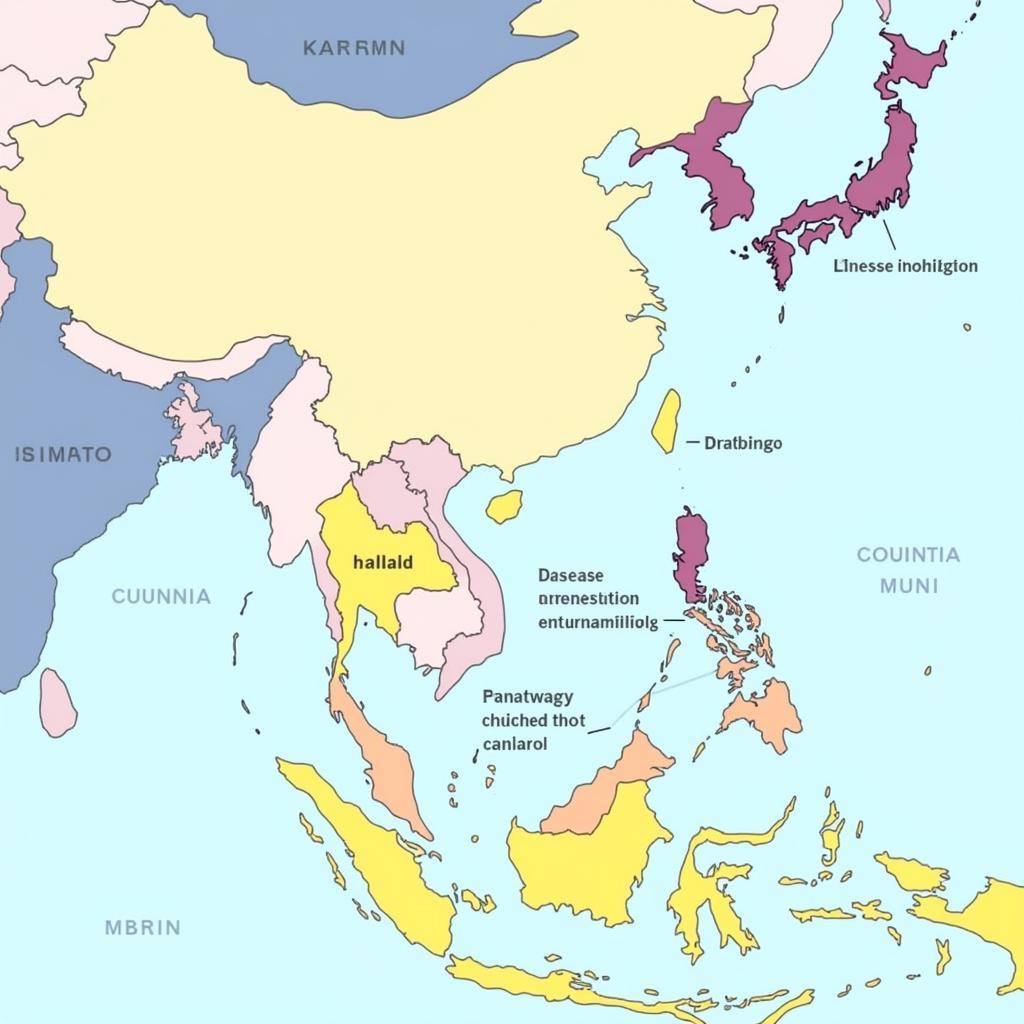The Association of Southeast Asian Nations (ASEAN) plays a significant role in the global pork market, both as a major consumer and producer. The region’s economic growth, dietary habits, and agricultural practices significantly influence the dynamics of pork supply and demand, impacting prices, trade flows, and industry trends worldwide.
ASEAN Pork Consumption: A Growing Appetite
ASEAN boasts a rapidly growing population with a rising middle class, leading to increased purchasing power and changing dietary preferences. Pork, a staple protein source in many Southeast Asian cultures, has witnessed a surge in demand. Factors such as urbanization, rising incomes, and evolving tastes contribute to this trend.
ASEAN Pork Production: Challenges and Opportunities
 ASEAN Pork Production Landscape
ASEAN Pork Production Landscape
ASEAN member states are actively engaged in pork production, striving to meet domestic demand and tap into export opportunities. However, the industry faces challenges such as:
- African Swine Fever (ASF): Outbreaks of ASF have significantly impacted pork production in countries like Vietnam and the Philippines, causing supply disruptions and price volatility.
- Environmental Concerns: Intensive pig farming raises concerns about waste management, water pollution, and greenhouse gas emissions.
- Competition: ASEAN producers face competition from major pork exporters like the European Union and the United States.
Despite these challenges, ASEAN countries are implementing strategies to enhance productivity, improve biosecurity measures, and promote sustainable farming practices to ensure the long-term viability of their pork industries.
Impact on the Global Pork Market
The interplay of these factors positions ASEAN as a key player in the global pork market:
- Price Fluctuations: Disruptions in ASEAN’s pork production, such as ASF outbreaks, can send ripples through the global market, affecting prices and trade flows.
- Import Dependence: Several ASEAN countries rely on pork imports to meet domestic demand, creating opportunities for international exporters.
- Trade Dynamics: ASEAN’s growing middle class and evolving consumption patterns influence global trade patterns, with the region emerging as a significant importer of high-quality pork products.
The Future of ASEAN’s Influence
ASEAN’s impact on the pork market is expected to become even more prominent in the coming years. Continued economic growth, population expansion, and dietary shifts will fuel pork demand. The region’s commitment to enhancing production practices, combating animal diseases, and promoting sustainable agriculture will shape the future of its pork industry and its influence on the global stage.


